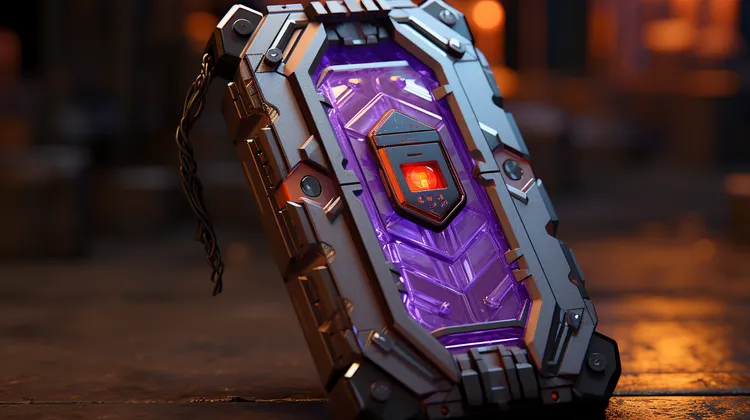Cryptocurrencies have gained significant popularity in recent years, attracting both individual investors and institutional players. As the value and number of digital assets continue to grow, the importance of securing one’s crypto holdings has become paramount. One of the most secure and reliable ways to safeguard your cryptocurrencies is by using a hardware wallet. In this article, we will explore how to effectively use a crypto hardware wallet to protect your digital assets.
A crypto hardware wallet is a physical device that is designed specifically to store and secure cryptocurrencies. Unlike online wallets or software wallets, a hardware wallet operates offline, making it resistant to hacking attempts and online fraud. The device stores your private keys, which are necessary to access and manage your crypto assets. By keeping the private keys offline, a hardware wallet ensures that they are not exposed to potential threats on the internet.
To begin using a crypto hardware wallet, the first step is to choose a reputable brand and model that meets your requirements. There are several hardware wallet options available in the market, such as Ledger and Trezor, which provide top-notch security features and compatible software interfaces. Once you have obtained a hardware wallet, carefully follow the manufacturer’s instructions to set it up properly.
The setup process typically involves connecting the device to your computer or smartphone using a USB cable or Bluetooth. You will need to create a new wallet or import an existing one by inputting your recovery seed phrase. A recovery seed phrase is a series of random words that act as a backup in case your device is lost or damaged. It is crucial to write down this seed phrase and store it securely, as it is the only way to recover your wallet if needed.
After setting up your hardware wallet, you can start transferring your cryptocurrencies to it. To do this, you will usually need to install a compatible software application on your computer or mobile device. These applications, provided by the hardware wallet manufacturer, allow you to manage your crypto assets and interact with the blockchain securely.
To initiate a transaction, launch the wallet software and connect your hardware wallet to the computer or smartphone. You may need to enter a PIN on the device to authorize the connection. Once connected, you can browse through your wallet’s interface and choose the cryptocurrency you want to send or receive. When sending funds, you will need to specify the recipient’s wallet address and the desired amount.
Before confirming any transaction, it is crucial to review all the details thoroughly. Check the recipient’s wallet address multiple times to ensure its accuracy and validity. A small mistake in inputting the address could result in irreversible loss of your crypto-assets. Once you are confident that all the details are correct, confirm the transaction on your hardware wallet. The device will ask for your authorization, which can be done by using physical buttons or a touch screen, depending on the model.
Crypto hardware wallets often provide an additional layer of security by requiring a second verification step known as a “transaction confirmation.” This confirmation step ensures that the details of your transaction are displayed and verified on the hardware wallet’s screen, minimizing the risk of phishing attacks or unauthorized transfers. Always double-check the amount you are sending and the recipient address before confirming this step.
Another important aspect of using a hardware wallet is keeping it updated. Manufacturers regularly release firmware updates that include security patches and new features. It is crucial to periodically check for updates on the manufacturer’s website or through the wallet software and follow the instructions to install them. Keeping your hardware wallet up to date ensures that you have the latest security measures in place.
Apart from storing and managing cryptocurrencies, many hardware wallets also support additional features such as interacting with decentralized applications (DApps) and staking. These features allow you to engage in various activities within the crypto ecosystem, such as lending, borrowing, or participating in governance processes. To utilize these functionalities, you will need to explore the wallet’s dashboard or connect it to compatible third-party applications.
While a crypto hardware wallet provides robust security, it is still essential to be cautious in safeguarding your device. Ensure that you keep the hardware wallet in a safe and secure physical location when not in use. Avoid sharing your recovery seed phrase or private keys with anyone. Your hardware wallet should be treated as a valuable asset, akin to a physical wallet or jewelry, and should be protected accordingly.
Using a crypto hardware wallet offers a high level of security and peace of mind for cryptocurrency investors. By following the setup process, transferring funds securely, reviewing transactions diligently, and updating the device regularly, you can effectively utilize a hardware wallet to protect and manage your digital assets. Remember, taking responsibility for your crypto security is crucial in this ever-evolving digital landscape.




I don’t have the time or patience to set up a hardware wallet. I’m fine with the risks of using an online wallet.
I like that hardware wallets require a second verification step for transaction confirmation. It adds an extra layer of security and reduces the risk of unauthorized transfers.
Keeping the hardware wallet updated is essential! Firmware updates provide improved security measures and new features. Gotta stay up to date with the latest patches and enhancements.
Choosing a reputable brand for your hardware wallet is key! Ledger and Trezor are mentioned as top choices. Gotta make sure my investments are in good hands.
The manufacturers of these hardware wallets could store my recovery seed phrases and steal my cryptocurrencies. No thanks!
The setup process seems so complicated and time-consuming. I’d rather just use an online wallet.
Reviewing all the transaction details is a must! Making sure the recipient’s wallet address is correct is crucial to avoid any losses. Gotta double-check everything!
Safeguarding the hardware wallet is vital! Keeping it in a secure physical location and not sharing recovery seed phrases or private keys are important precautions. It’s like protecting any valuable asset!
Remembering the recovery seed phrase is so important! That’s the only way to recover your wallet if something happens. I’ll definitely be writing it down and storing it securely!
Hardware wallets are so expensive! I don’t think it’s worth the investment.
Taking responsibility for my crypto security is crucial in this digital landscape. Using a hardware wallet with proper setup, secure transfers, thorough reviews, and regular updates gives me peace of mind. 🛡️✨
I just read this article about using a hardware wallet to protect your cryptocurrencies and it’s super informative! It’s great to know that using a hardware wallet keeps your private keys offline and resistant to hacking attempts.
I’ve heard of people losing their hardware wallets and losing all their cryptocurrencies. It’s not foolproof!
I don’t see why I would need a hardware wallet when I can just use a paper wallet for free.
Just another article trying to make me paranoid about the security of my cryptocurrencies.